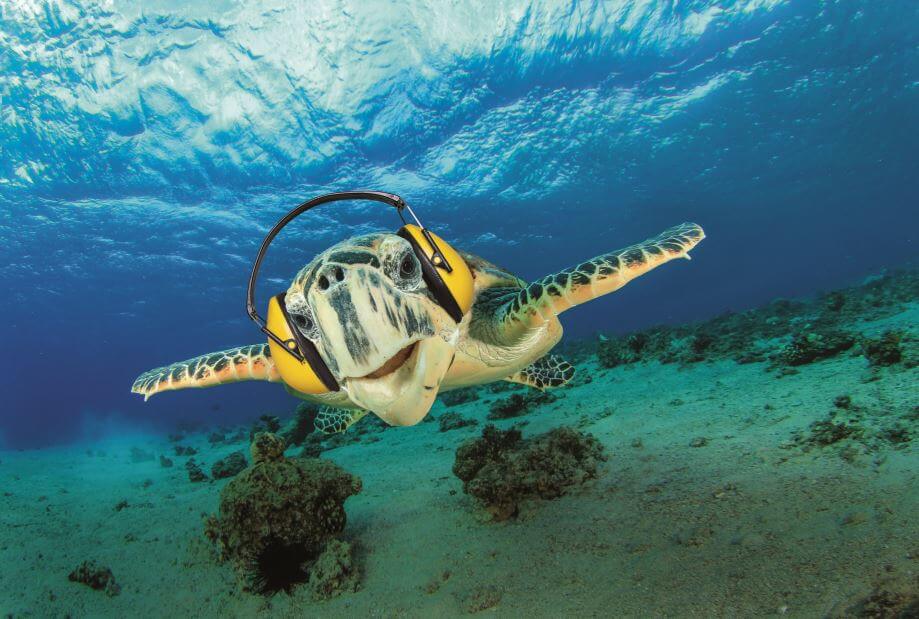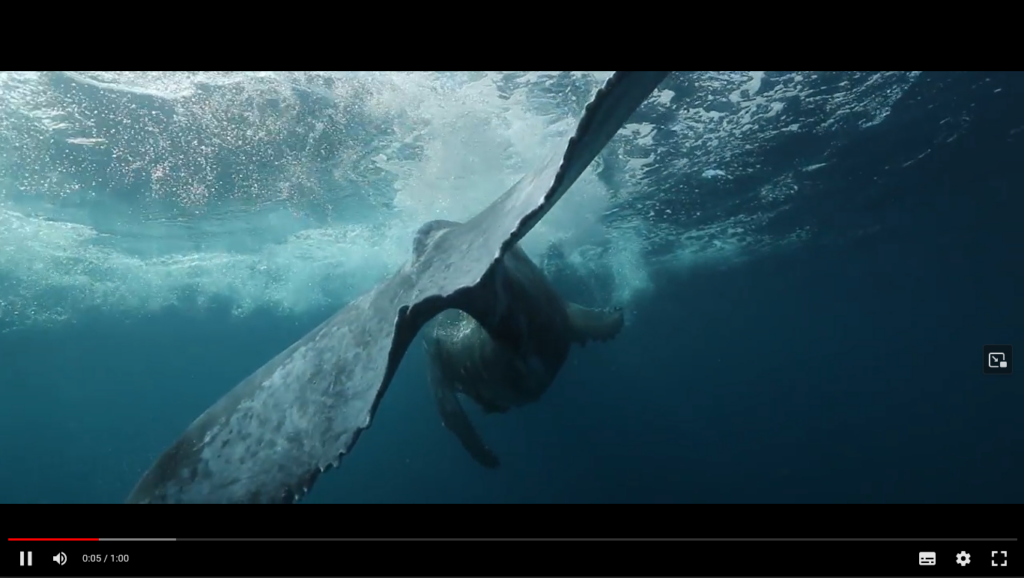Noise Awareness Day: Ocean noise poses a threat to marine life
Ocean noise is an invisible pollutant mainly caused by shipping, offshore oil and gas exploration, deep-sea mining and military activities. On the occasion of the International Noise Awareness Day (27th of April), OceanCare offers a high-quality, royalty-free video clip on ocean noise. The closing scene points to the impulsive noise caused du ring oil and gas exploration activities and is emitted every 10 to 15 seconds for many weeks.
lncreased commercial shipping, offshore oil and gas exploration, military activities and several deep-sea mining related activities among others cause noise pollution in the ocean. Since the 1960s, man-made noise has doubled every decade in some regions. In EU waters noise levels even doubled within only five years between 2014 and 2019, according to a 2021 report by the European Maritime Safety Agency (EMSA). Whales are particularly threatened by anthropogenic underwater noise. In total, “about 150 marine species have been shown tobe impacted by ocean noise – basically all species that have been subject to such research” says Lindy Weilgart, a marine biologist at Dalhousie University, Canada, and OceanCare.
“Marine animals cannot flee the ocean. They are permanently exposed to unimaginable noise, an invisible threat that can be lethal” says Nicolas Entrup, Director International Relations at OceanCare. “But this threat can be reduced or eliminated relatively easy.”
- Shipping: Shipping is the main source generating continous noise in the Reduced speed would have a positive effect: if the global fleet slow down by 10% noise emissions would be reduced by 40 % (Leaper, 2019).
- Seismic surveys searching for oil and gas sources are among the loudest human generated activities in the ocean. Such activities employ air guns which emit noise of up to 260 decibels towards the seabed and raises background noise levels over thousands of such intense underwater noise is life-threatening for many marine species, from the smallest crustaceans to the largest whales. Just recently, in February, an atypical whale stranding occurred off Greece at the same as seismic surveys occurred in the same area.
- Ocean noise occurs at all stages of deep-sea mining. lf deep-sea mining was permitted without further research and regulation, it would emit noise perpetually for decades.
- Militaryactivities, such as active sonar systems to detect submarines screen entire marine areas by emitting intense low and midfrequency signals. In addition, detonations and the blasting of ammunition and mines pose an immense threat to marine life.
The ocean is full of natural sounds. Sound is also vital for animals to locate their prey, communicate and orient themselves. Man-made noise masks communication, can result in hearing loss, stress or even physical injury and death in marine animals. Other effects may include habitat loss, reduced reproduction and impairment of the immune system. The use of air guns for hydrocarbon exploration activities can kill juvenile krill or result in significant reduction of fish catch rates. Therefore, ocean noise is recognised as marine pollution.
Ocean noise pose a serious threat to marine animals. Noise propagates rapidly and very efficiently underwater, at almost five times the speed of sound in air. lntense low frequency noise can be heard over thousands of kilometres in the ocean under certain conditions.
Video: Be Aware of Noise
For raising awareness about the threats of ocean noise, OceanCare offers this high-quality, royalty-free video clip:

